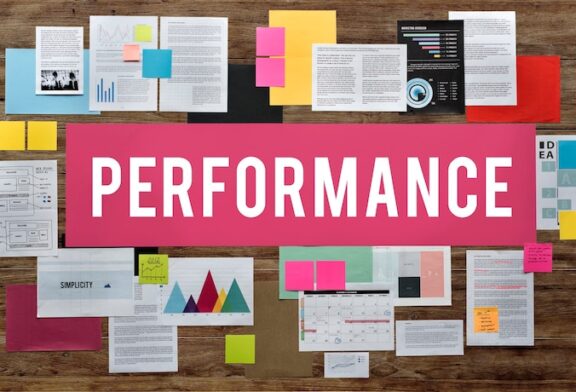As employees succeed in their roles, they enjoy positive performance appraisals. Often, this comes with the expectation that they will be awarded promotions. However, the challenge for HRMs and managers is to identify which of the top performers are best suited for promotions and/or a management role.
This challenge is addressed with a management succession plan.

In almost all workplaces, promotions are awarded only to the top performers. However, it sometimes happens that these people are not able to perform as well in their new roles. For instance, an employee might not be the best achiever in their team. Still, they might possess team management, communication, and leadership skills that make them a perfect fit for a managerial position.
The Federation of Small Businesses (FSB) states that only 35% of small businesses in the UK actually take up succession planning. Further, barely 28% of employees in the UK have to undergo a well-structured performance management system. Thus, a dissonance exists between performance management and succession planning, a gap that needs to be bridged to establish an effective and efficient system.
Let’s take a look at how performance management and succession planning are interlinked, one affecting the other.
What is Succession Planning?
Succession Planning is a part of HR strategy, identifying workers who are suitable for management roles and training them adequately. With a proper management succession plan, you can fill any management or C-suite positions that fall vacant as people either retire or move on.
By opting for managerial succession planning, you get:
- A list of management roles for laying out succession plans.
- Parameters that you need to check in employees chosen for succession planning
- More internal promotions instead of external hiring.
- Business continuity and no management vacuums.
- Trained employee ready to step into management positions.
What is Performance Management?
Performance management for employees is a basic systematic process, which consists of setting job targets for employees, tracking their progress, evaluating their achievements, and providing feedback. Through a process of continuous feedback and communication, this helps with managing the performance of an employee, aligning it with the strategic goals of the organisation.
Further, the performance management process helps:
- Supplement the employee appraisals.
- Keep a check on all workers.
- Offer feedback for any issues faced by the employee.
- Increase employee engagement.
- Establish transparency.
Why Performance Management and Succession Planning Must Be Connected
While both performance management and succession planning can be taken up as standalone tasks, in an organisation, the results of one carry over to the other. Thus, as a best practice, HRMs should use the results from performance management and use them to serve as the benchmarks for succession planning.
The Risk of Treating Them as Separate Functions
Addressed separately, succession planning and performance management can potentially hinder the development of a talent pipeline. Further, the business can face some of these following problems:
- Missing Out On Talent Development Opportunities
Taking up both tasks separately, employers may fail to identify workers who can be trained for a management position.
- Poor Succession Planning
Due to the lack of a cohesive plan, HRMs and managers might find it difficult to pinpoint which skills should be a must for succession plans.
- Loss in Employee Engagement and Workplace Morale
Workers may expect promotions owing to their good performance, and not receiving one will lead to a loss of morale.
- High Risk of Leadership Gap
Absence of a well-trained succession pipeline will lead to a management vacuum whenever a position falls vacant.
- Stalled Business Growth
When the promoted worker is not adequately trained, they will take more time to adapt to their role and may even fall short of expectations, slowing down the organisation.
How Performance Data Supports Succession Decisions
Performance data for a given employee assesses their potential, tracks their development, and elaborates on whether or not they are a good fit. By looking at performance data, you can facilitate the following:
- Identify Employees With Management Potential
Using the data and analytics from performance management, identify employees who show leadership potential or can be groomed for such a position.
- Assess the Skillset and Readiness
Once the employees are listed, check their skillset for relevant skills and training gaps. This will help design targeted L&D programs.
- Enroll Then for L&D Programs
This helps your employees build their leadership skills and cover any skill gaps they might have.
- Track the Progress Made by These Employees
Evaluate the effectiveness of the L&D programs by tracking the progress made by the employees. This can be assessed from their performance data.
- Facilitate Mentorship Programs
Employees who have completed their L&D program can get additional training by being mentored by the existing leadership team.
- Establish a Talent Pipeline to Ensure Business Continuity
Once you have a well-trained person in a management position, they take less time to adapt to the position, thus ensuring business continuity.
Identifying Future Leaders through Performance Management
On average, only 45% of organisations fill their leadership positions internally. However, internal promotions are a good way to reward the high-performing employees, improving engagement, and boosting morale. These also keep overhead costs low since HRMs can save on the costs of hiring.
Beyond KPIs: Evaluate Leadership Potential
Other than KPIs, the following serve as an indicator of whether or not a person is a good fit in a leadership position:
- Engagement levels with regards to tasks and assignments
- The ability to learn from shortcomings.
- Ability to listen well and communicate effectively.
- Being good at multitasking and delegating work.
- Showing initiative to learn.
- Know how to improve morale and help peers.
- Display EI, strategic thinking, and decision-making skills.
Key Tools for Leadership Identification
According to a 2023 report, 95% of all organisations use performance management in one form or the other. To learn whether an employee is a good fit for managerial succession planning, the following tools can prove useful:
- Performance Management and Succession Planning Tools
These shed light on how well the employee is faring in their role and whether or not they are a good fit for the organisation’s leadership.
- 360-degree Feedback
By gaining inputs from the employee’s peers, immediate supervisors, and subordinates, managers can get a good idea of their strengths and drawbacks.
- Psychometric Tests
These are brief tests that check for cognitive and psychological attributes of a person. Thus, they provide a tentative idea of whether a person has what it takes to be in a leadership role.
- Self-assessments
These help individual workers understand their own strengths and weaknesses, and learn which skills they need to cultivate to be suitable for leadership.
A comparison of the above can be observed at a glance as follows:
| Tool | Description | Pros | Cons | Best for |
| Performance Management and Succession Planning Tools | These are software-based tools that help evaluate the performance of every employee, offer feedback, and identify those suited for succession planning | Is data-driven, analytical, and sets a uniform basis to evaluate all employees | It may take time to design and deploy | Checking work performance and creating a talent pipeline |
| 360-Degree Feedback | An evaluation system based on inputs from people at various levels | Provides a thorough view of a worker | May offer biased results due to being qualitative | Getting inputs from multiple sources |
| Psychometric Tests | Brief exams that evaluate a candidate’s cognitive skills | Checks workers for natural leadership potential | Does not account for performance as an employee | Evaluating aptitude |
| Self-assessments | Tests and quizzes that help people learn their own strengths and weaknesses | Enables self-development | Inconclusive and biased as a standalone leadership planning tool | Increasing self-awareness |
Table 1: Comparison between the different tools for managerial succession planning.
Reframing Succession Planning as Talent Development
Creating a pipeline of workers to take over leadership positions is a very basic idea of managerial succession planning. At its core, it identifies the people who have the potential to succeed in a leadership position. Then, it places them in necessary training and mentorship positions, cultivating their leadership skills. Thus, talent development is a very fitting term for succession planning programs.
From Replacement Strategy to Leadership Readiness
According to a 2023 report, 40% of UK-based employers recruit their leadership team externally, many stating that this provides a fresh perspective. In fact, most employers (again, 40%) have no idea if they even have people present who are suited to a leadership role.
However, when organisations hire externally, even in the presence of suitable candidates, they face two problems:
- Loss of employee engagement
- High costs of hiring a new employee
Thus, the ideal way is to check internally if there are suitable candidates present. If yes, it is better to train and mentor these workers for the leadership role. This ensures that the person next in line for a leadership role already knows of the organisation, its goals, and can easily adjust to the role. It also ensures that they take less time to become productive in the new role.
Linking Performance Reviews with Career Growth
The first step to finding suitable candidates for a management succession plan is to check their performance with respect to work, assignments, and additional achievements. Further, it is important to check which employees are engaging in skill development programs and show signs of being a good fit for leadership.
From the feedback provided to employees as a part of their performance management evaluations, managers can check how many employees have worked on these suggestions. Based on this, managers can provide further feedback, helping employees grow and improve.
Finally, the best-performing employees, who show leadership potential, can be made part of the managerial succession planning process and requested to take up L&D programs.
Making the Connection Meaningful: Practical Integration Strategies
As tasks, performance management and succession planning are separate and serve unique goals. However, both are more effective when they are taken together, a fact that can be elaborated as follows:
Align KPIs with Leadership and Competency Models
Goals and key performance indicators (KPIs) set should be in line with the business’s long-term goals. Further, these should be designed in a manner that highlights a worker’s leadership abilities and helps develop necessary skills.
Incorporate Development Planning into Performance Reviews
As a part of the feedback given under performance reviews, managers can provide a plan that lays out the L&D programs and skills that an employee can use to cultivate their leadership skills.
Create Data-Driven Talent Pipelines
Using analytics obtained from performance management data, employers/ managers can identify their best workers. This helps them build a talent pipeline using the workers who are best suited for leadership positions.
Improving Employee Engagement and Retention
Since the entire conversion of top workers going into management succession plans is a transparent process, it helps drive engagement. Further, this also serves as an incentive for the top performers and a motivation for the others, increasing both engagement and retention.
Technology’s Role in Bridging the Gap
Conducting performance management, sorting through employee data, and generating analytics can be a huge task, taking up a lot of time. Further, done manually, it is prone to errors and biases. Thus, opting for an HR software that combines performance management and succession planning can be beneficial for organisations.
Why Integrated HR Systems Matter
Integrated HR systems bring performance management and succession planning under a single platform. Further, it automatically uses inputs, data, and analytics from performance management to provide an overview of workers who are suitable for leadership roles.
With an Integrated HR system, you can get the following benefits:
- Streamlining the performance management, appraisal, and succession planning system.
- Implementing data security measures.
- Improving the employee experience and workplace transparency.
- Establishing an efficient and automated system.
- Facilitating data-driven decision making.
From Manual Processes to Automated Insights
Traditionally, both performance management and succession planning were done via paper forms and digital spreadsheets. However, with developments in tech, companies are shifting towards HR software, with 52% of UK businesses implementing them.
These systems help:
- Save time
- Generate analytics
- Reduce bias
- Reduce human error
- Improve compliance
- Facilitate communication
- Improve workforce planning
- Reduce paperwork
- Reduce admin costs
Common Challenges and How to Overcome Them
Managing performance is only the start. When it comes to selecting employees for succession planning, we often face the following issues:
Siloed Systems and Data Inconsistencies
As an employee spends more time in an organisation, their employee records grow, accounting for data from past appraisals. If the organisation has stored similar data in multiple locations manually, there remains a possibility of inconsistencies.
To manage these data silos, HR software provides a single platform that creates a centralised database. This removes data inconsistencies and mismatches.
Manager Bias and Subjectivity
Manual systems and spreadsheets are subject to bias; the opinions regarding an employee greatly affect their appraisal and feedback.
Using HR software establishes a data-driven and analytical system, removing bias.
Resistance to Change
Often, when deploying a new system, it is common to face resistance from employees as well as management. Thus, it is important to inform and educate everyone about the new HR system, how it works, and what it promises.
Wrapping Up: Performance Management to Succession Planning
Managing the performance of your employees is not all. For a streamlined, efficient, and data-driven system, it is important to integrate performance management and succession planning in a single platform.
Need help creating a management succession plan? Check out the tools for performance management and succession planning.





